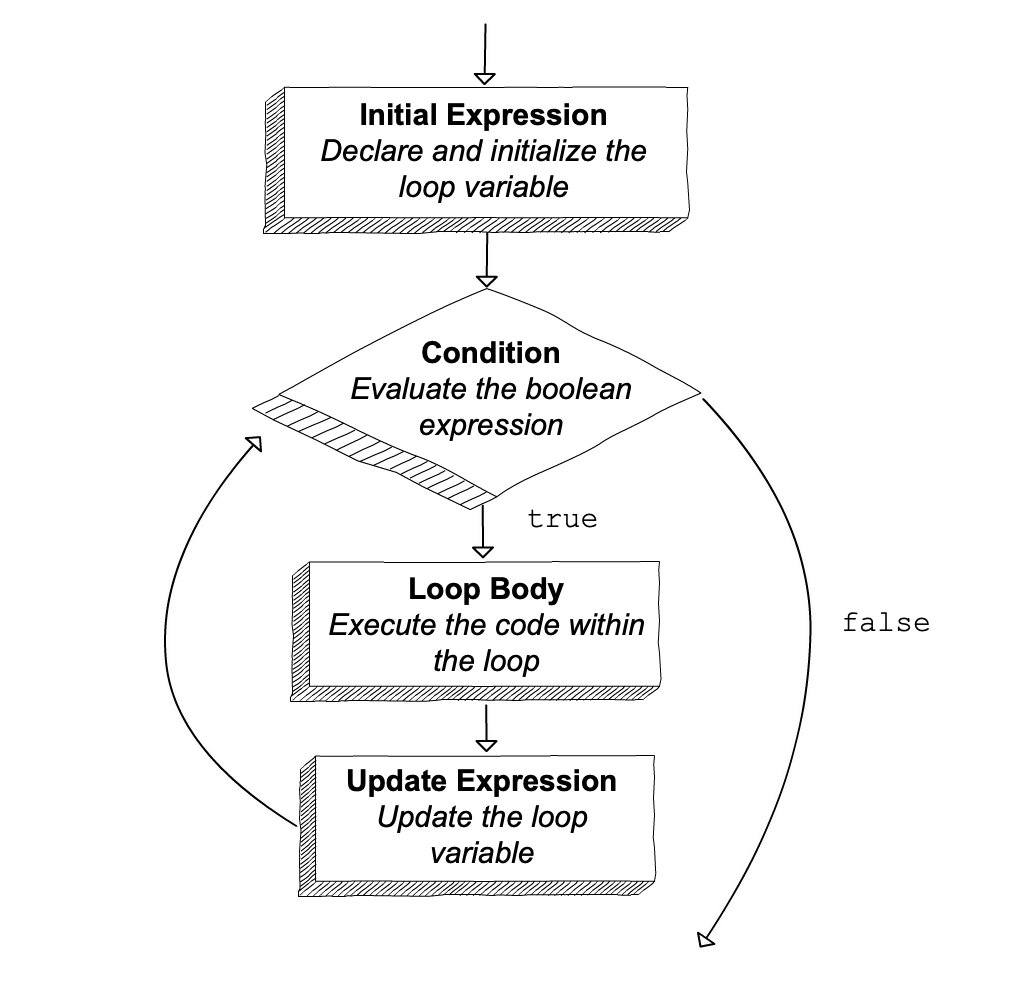for Loops¶The for loop is the first JavaScript tool for iteration that we will explore. A for loop is typically used for definite iteration. Definite iteration is the process of repeating a specific task with a specific data set. When a for loop begins it can usually be determined exactly how many times it will execute: once for each item in the data set.
for Loop Syntax¶We have already seen the basic syntax of a for loop.
1for (let i = 0; i < 51; i++) {
2 console.log(i);
3}
This program prints the integers 0 through 50, one number per line. In the language of definite iteration, we say that the loop has a data set of 0-50, and its action is to print a value to the console.
Let's break down this syntax piece by piece, so we can begin to understand how for loops are structured.
A for loop always contains the following components:
for (initial expression; loop condition; update expression) {
loop body
}
Notice that in the first line, within parentheses, the components initial expression, loop condition, and update expression are separated by semicolons. Let's look at these components in detail.
let i = 0 is executed exactly once, at the beginning of loop execution. The variable i is the loop variable.i < 51 is the loop condition. This condition is evaluated before each loop iteration, or repetition.true then the loop executes again.false then the loop ceases execution, and the
program moves on to the code below the loop.i++ is the update expression. This expression is executed at the end of each loop iteration.{ }) is the loop body.
The body is executed once for each iteration of the loop.for Loop¶In just a few lines of code, a for loop contains a lot of detailed logic, so let's spend some time breaking down the flow of execution for the particular loop that we've been looking at.
1for (let i = 0; i < 51; i++) {
2 console.log(i);
3}
Here is a step-by-step description of how this loop executes:
for loop, the initial expression let i = 0 is executed, declaring the variable i and initializing it to the value 0.i < 51 is evaluated, returning true because 0 is
less than 51.true, the loop body executes, printing 0.i++ is executed, setting i to 1. This completes the first iteration of the loop.i. This continues until the loop condition evaluates to false in step 2, ending the loop. In this example, this occurs when i < 51 is false for the first time. Since our update expression adds 1 after each iteration, this occurs when i is 51 (so 51 < 51 is false). At that point, the loop body will have executed exactly 51 times, with i having the values 0...50.In general, we can visualize the flow of execution of a for loop as a flowchart.

Flow of execution of a for loop¶